Canon CANONET G-III QL17, CANONET G-III QL19 Manual
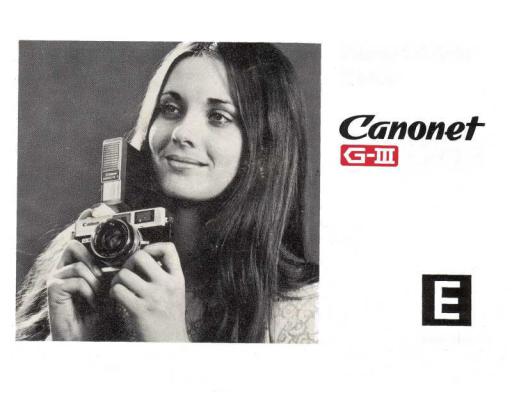
How to Use Your
17/19
English Edition
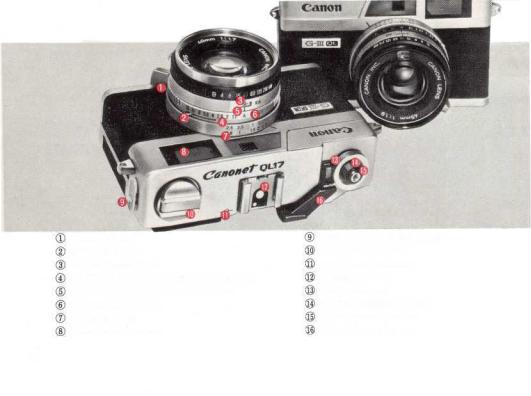
Focusing Lever
Selftimer Lever
Shutter Speed Ring
AUTOMATIC/MANUAL Aperture Ring
ASA Film Speed Indicator Window
Automatic EE Mark
Focusing Ring
Viewfinder Window
Flash Socket Safety Cover
Film Rewind Crank
Film Plane Indicator
Accessory Shoe
Frame Counter
Shutter Release Button
Cable Release Socket
Film Advance Lever
1
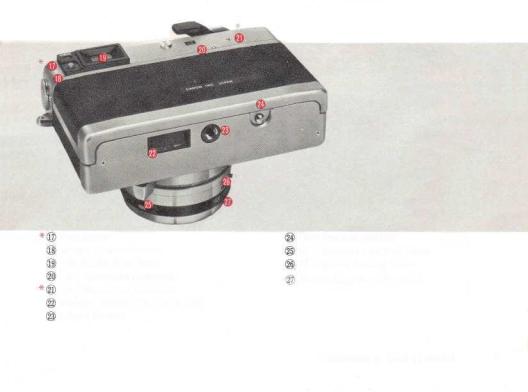
Blue Lamp
Battery Check Button
Viewfinder Eyepiece
Film Transport Indicator
Film Wound-up Indicator
Mercury Battery Compartment
Tripod Socket
Film Rewind Button
Bulb Exposure Setting Lever
Film Speed Setting Lever
Simple Exposure Symbols
* Exclusive to G-III 17 model. |
2 |
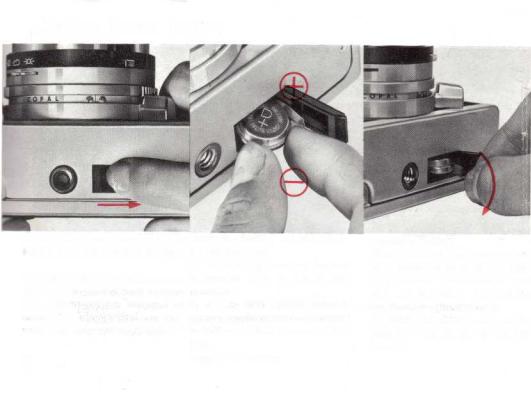
Mercury Battery Loading
Before using your Canonet G-III, load it with the mercury battery.
To open cover of the battery compartment, insert fingernail in open slot, sliding cover in direction of arrow. By using a slight pull outward, the cover will hinge open.
3
Insert the battery on the tab in the compartment.
• Be sure the mercury battery is inserted only in the correct direction.
• A 1.3v M20 (#625) mercury battery should be used—equivalent to Mallory PX-625, Eveready EPX-
625.
Press cover to close.
Replacing Battery
When replacing the mercury battery, open the cover of the mercury battery compartment and pull out the tab. The battery can then be easily removed.
• When the camera will not be used for long period, remove the battery.

Battery Checking
I n case of |
! n case of |
Canonet GUI 17 |
Canonet G-IH 19 |
Turn the automatic/manual aperture ring, releasing it from "A " position, and set it for manual control of aperture. In this case, any f/stop can be set.
In case of Canonet G-III 17
Press the battery check button (colored red). If the blue lamp lights up, the battery has sufficient power. Otherwise, the battery should be replaced.
In case of Canonet G-III 19
Look through the viewfinder; then press the battery check button. If the exposure indicator inside the viewfinder positions in the blue zone, the battery has sufficient power. Otherwise, it should be replaced.
• The battery check button will not light up at temperatures of -15°C(5°F) or under. Camera will work, however, if the battery has sufficient power.
• The Canonet G-III 17 has no blue zone.
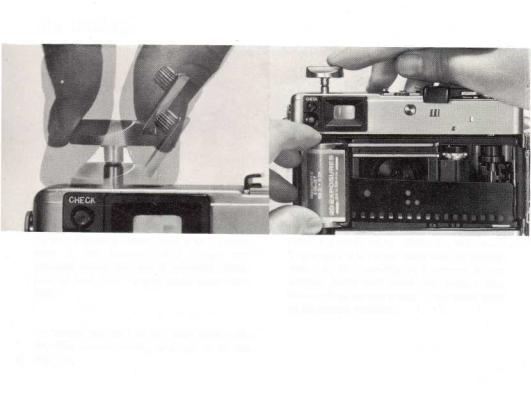
Film Loading
Canon's Exclusive Quick-Loading (QL) mechanism in the Canonet G-III accepts any standard 35mm film roll in cartridge. When loading new film, always avoid direct sunlight.
To release the latch of the back cover, raise the film rewind crank, and pull it all the
5 way up.
Open the cover fully. When the back cover is opened, the QL cover opens simultaneously. Face the film cartridge as illustrated in line drawing inside back cover, and insert it into the cartridge compartment. Push crank back to its normal position.
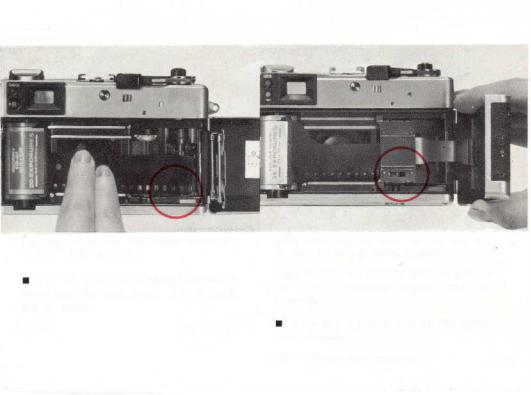
Lay the tip of the film leader above the
"amber" film set mark.
The QL cover automatically opens and closes with the back cover, Do not touch
the QL cover.
Bring down |
the QL cover to hold |
the film |
in place by |
closing the back cover. |
|
Look through the sprocket window to see if the film is correctly engaged with the sprocket,
if the film is sagging, turn the film rewind crank clockwise.
Close the back cover completely. |
6 |
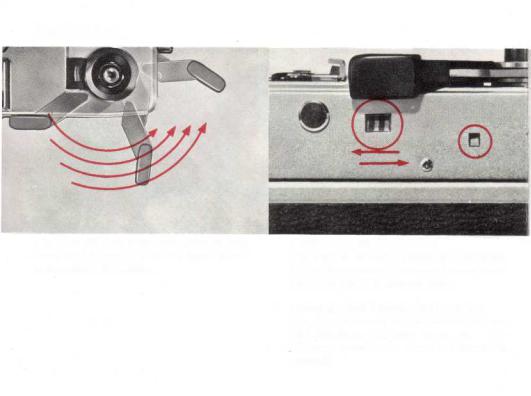
Pre-Settings
Wind the film advance lever three or four times until it stops. The first frame is now automatically in position.
7
Checking Correct Film Loading
The film is properly loaded and advanced if the film transport indicator flickers when you wind the film advance lever.
Checking Proper Winding Film (GIII 17) |
|
|||
The |
film is wound up |
if the |
color of |
the |
film |
wound-up indicator |
turns |
red. |
The |
indicator turns white when the shutter is released.
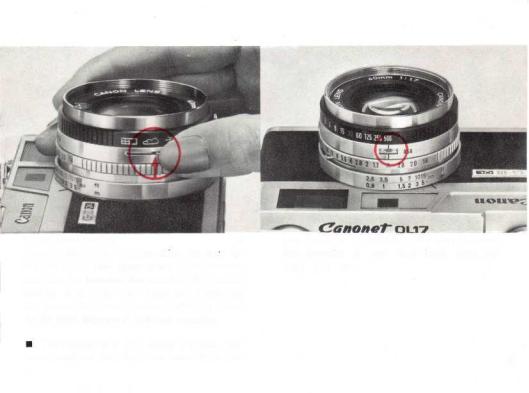
Film Speed Setting
Immediately after loading film, be sure to set the ASA film speed scale in the proper position by pressing the notched film speed setting lever with your fingernail, matching the proper film speed number with the index of the ASA film speed indicator window.
The higher the film speed number, the more sensitive the film; the lower it is, the
less sensitive. The ASA 200 film is better
for shooting at low light level, than the
ASA 100 film.
8
